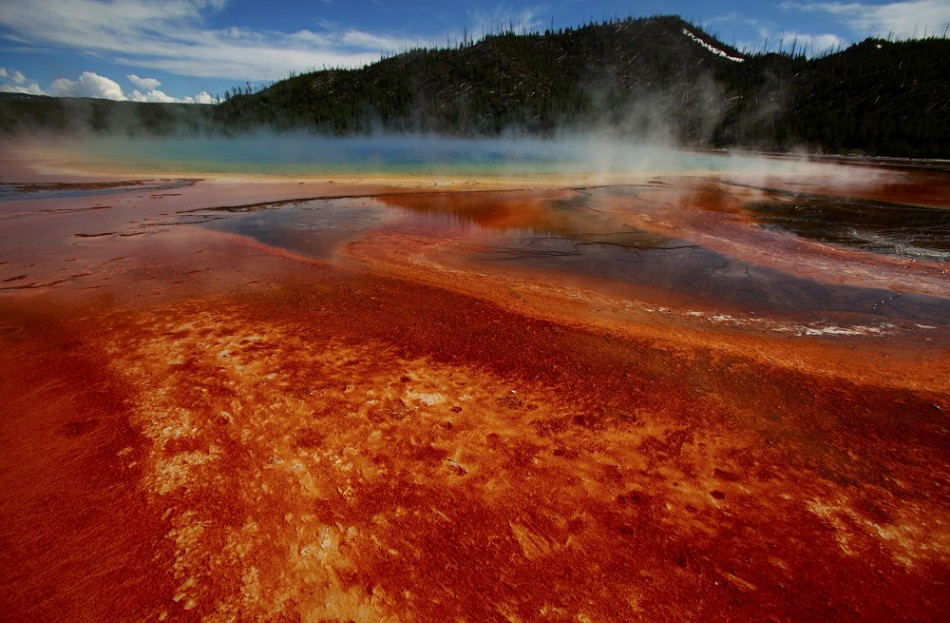
Researchers from the University of Utah said the volcano's magma chamber - a lake of molten rock beneath the National Park - is approximately 2.5 times bigger than earlier estimates suggested.
If the volcano were to erupt today, scientists predict that the resulting ash cloud would affect areas 1,000 miles away, leaving two thirds of the entire US uninhabitable.
The team discovered that the underground cavern is more than 90km long, containing up to 600 cubic km of molten rock.
Prof Bob Smith, of the University of Utah, said: "We've been working there for a long time, and we've always thought it would be bigger but this finding is astounding."
To gauge the size of the underground magma chamber, the research team used a series of seismometers placed around the park.
Dr Jamie Farrell, part of the research team, said: "We record earthquakes in and around Yellowstone, and we measure the seismic waves as they travel through the ground.
"The waves travel slower through hot and partially molten material. With this, we can measure what's beneath."
Yellowstone is the largest supervolcano on the continent and has erupted several times in the last two million years.
The National Park is famous for its underground lava lake, which fuels its iconic hot springs. Most of the molten rock lies a few kilometres below Earth's surface.
Smith added that researchers could not tell when the supervolcano would blow again but some are of the belief that an eruption is on its way, despite the volcano erupting every 700,000 years.



Reader Comments
to our Newsletter